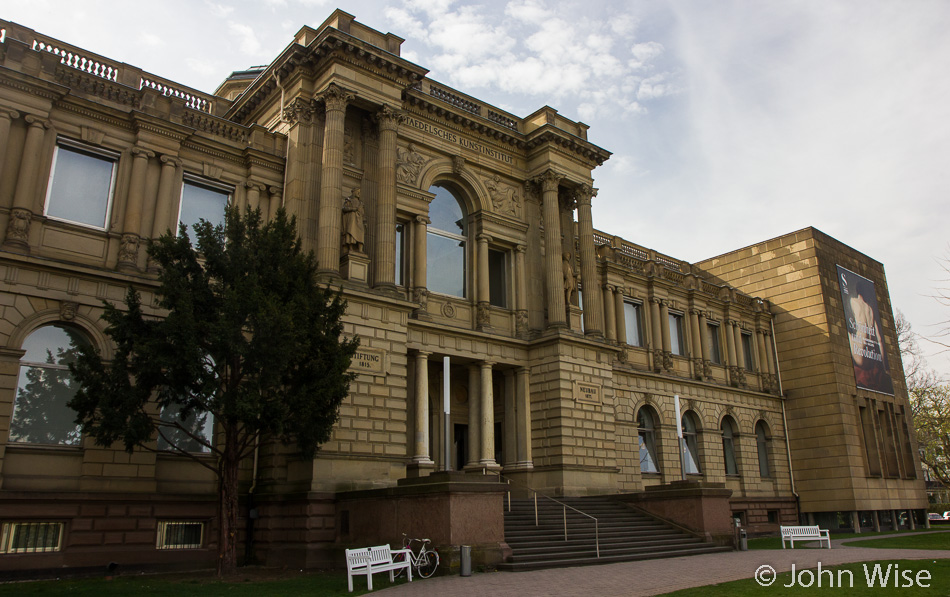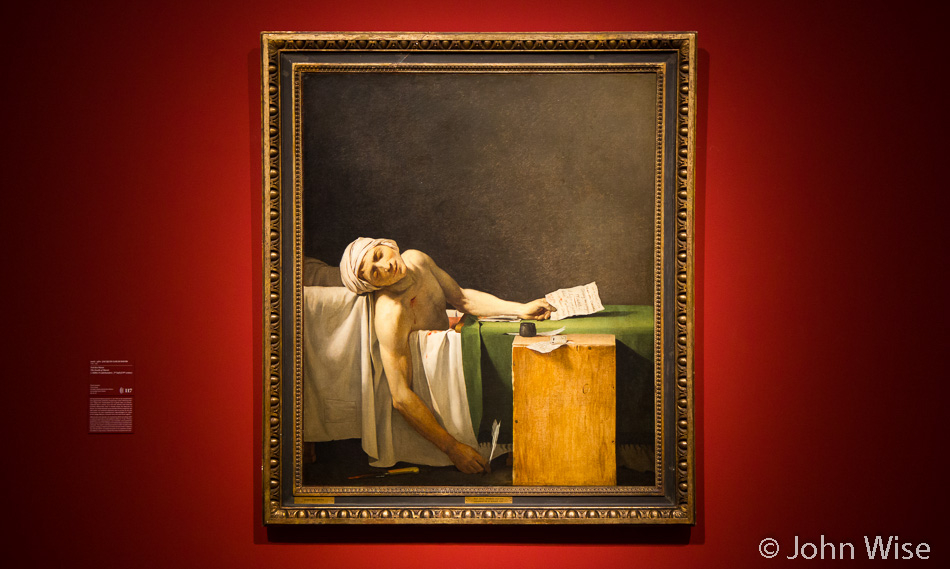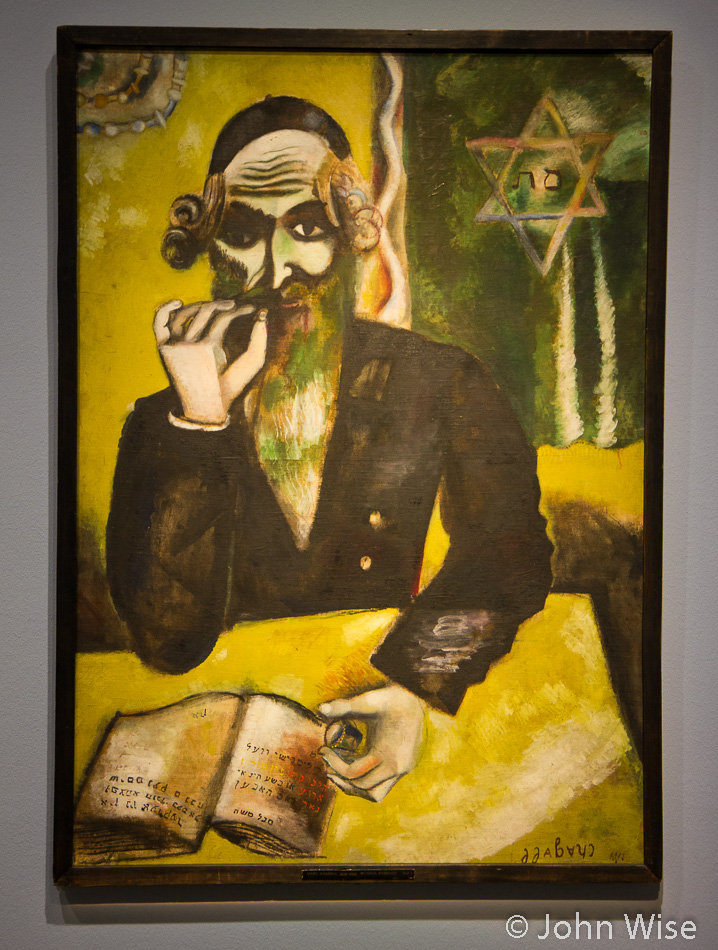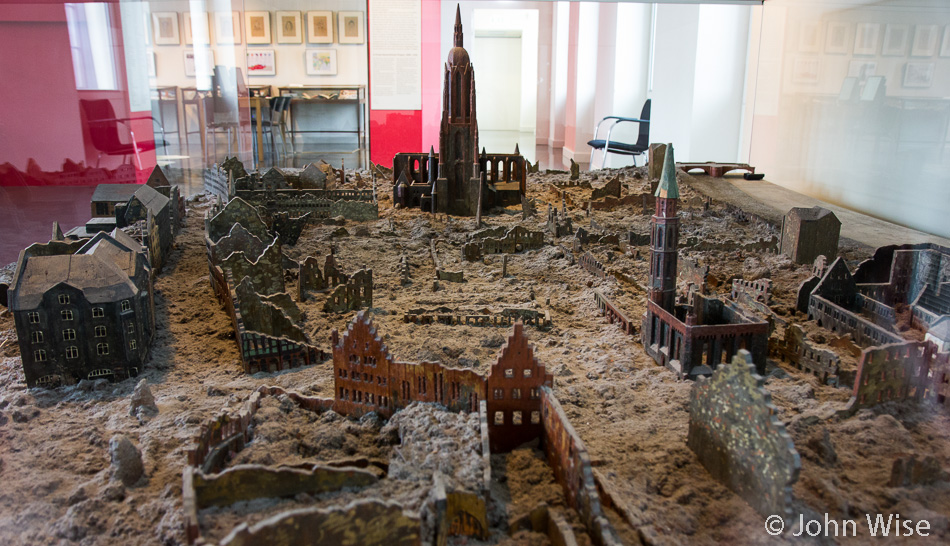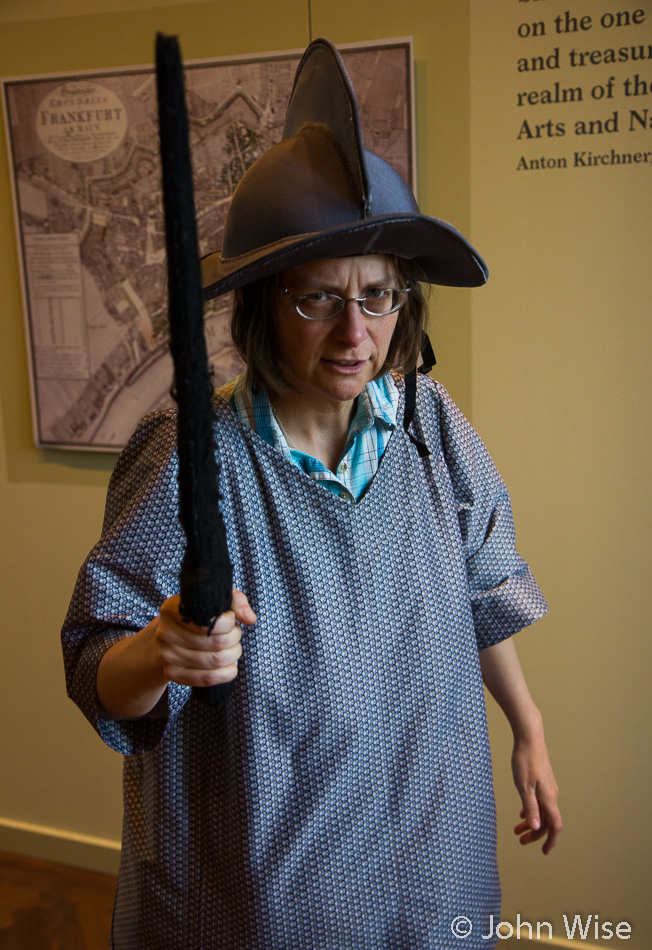While here in Germany doing what we can to keep my mother-in-law Jutta motivated as she recovers from her broken hip, Caroline has been getting some time in for her job back home in Phoenix, Arizona. This means that early mornings and late evenings are spent on her laptop trying to put in some hours, so this time here doesn’t count against vacation. With most “tourism” sites opening at 10:00, we have the morning for Caroline to put in a couple of hours. By 9:30 today, we hopped on the train and headed for the museum district along the Main River. Our first destination is the Städel Art Museum.
Astonishment greeted me as we walked up a stairway to see this painting staring at us. Unfortunately, it is not the “original.” That version hangs in the Musée Royaux des Beaux-Arts in Brussels, Belgium. While Jacques-Louis David is the original artist of “The Death of Marat,” it was in his workshop that copies were made; this is one of them.
There are many known artists on display at the Städel, but only a handful are personal favorites, such as Marc Chagall here. This is his work titled The Rabbi.
From Paul Klee – The Lamb. It’s a sheep thing due to the wife’s obsession with all things fiber!
Caroline, too has some favorites featured here; this is “Pietá,” painted by Franz Von Stuck back in 1891.
Another for the wife; Max Liebermann’s “The Weaver.”
Since learning of Otto Dix, he has remained a constant favorite of mine for 35 years. While I was living in Germany from 1985 through 1995, I would visit any museum I could find after learning that they may have a Dix on display. This is his work “The Artist’s Family,” painted in 1927. If I’m not mistaken, the largest collection of his work is housed at the Kunstmuseum in Stuttgart, Germany.
Across the street from the Städel is a new footbridge over the Main that brought us to the path that took us to the Frankfurt Historical Museum.
On the way up that side of the river, we pass an older bridge, Eiserne Steg. Here’s Caroline standing just a few steps above street level with the high-water marks noting the flood levels of the Main River.
Once in the Historical Museum, we came upon an old favorite of mine, the model of Frankfurt after it was destroyed during World War II. In a sense, Frankfurt was lucky to have this occur; it allowed for the modernization of the city. Without the destruction, rebuilding this city would have proven nearly impossible, as widening streets and tearing out narrow historical wooden buildings would have taken decades to resolve with owners and lawsuits that would have worked to protect the history of the city. What came out of the ashes became the banking capital of Europe.
Caroline tried on 22 pounds of gear, simulating the suit of armor worn by knights. Fearsome, isn’t she?
After our morning into the afternoon museum walk, it was once again time to visit Jutta, followed by taking ourselves to dinner. But this wasn’t any old dinner, as we had been invited to join To and Caroline at their apartment on Friedberger Landstrasse. Caroline is To’s wife; they married two years ago, and she’s an art history major when not working at a job that pays. To make us grünne sosse (green sauce), which is that Frankfurt specialty dish I wrote of back on our first full day in Germany. After eating, we talked and talked until nearly midnight. Meeting with old friends and new ones (it was great to meet you, Caroline Ka Punkt) is like putting on an old suit of armor; it just fits right. With an unceremonious 23-second goodbye and rush down the stairs, we were hoofing it to catch the next train. Tomorrow morning at 8:00, we have a breakfast date with another old friend.
